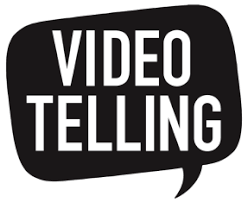Videos in ELT
In this seminar, we discussed the importance of using videos in ELT classrooms. One of the points we stressed on was how to push the boundaries with new technologies and explore new possibilities. Also, we talked about the suitability of the materials and its relevance to certain contexts.
The use of video in ELT goes back in time. Ben Goldstein (2017) states that “in 1990 video was just started to be used and it thus played a largely superfluous role in the language classroom” (p, 23). That’s because it was deemed as a leisure time activity of watching a video in the classroom. The learner would watch the whole film or part of it with almost no activity or tasks to perform. However, Goldstein adds that this whole process of video-based learning was transformed with the advent of “the visual turn.” People began exploring new ways of using videos, they thought of the use of video as a social activity and a cultural input where learners learn about the world (Clare, A. 2017). The social activities may include authentic dialogue of native/non-native speakers and allow the learners to engage in a comprehension task where they could identify the hard words or even the nationalities of the speakers.
In my context, I tried the use of video in one of my classes with a group of 7 graders. The video was about the Olympic torch lighting in Barcelona in 1982. The video shows an archer with his arrow and bow standing in the middle of the arena, then with a sharp aiming he shoots an arrow the lights the cauldron of the arena. When I asked the learners to retell the sequence of events in the video, most of them performed the task. I presumed that they visually recalled the actions in the video and with the help of some vocabulary on the board they managed to tell most of the detail. In the class, we also touched on Jamie Keddie’s video telling which I find helpful in the process of engagement and raising the participation of learners with the video. I watch some of his lectures, and I plan to use this technique in my classes in the future.
However, the question still persists why we should include or use videos? I believe that the video is one of the most interesting and engaging tools that could be used in ELT classrooms. In the technological age, the process of creating a video became extremely easy and accessible to almost everyone. Plus, there are many platforms that host videos like YouTube and Vimeo where if put publicly, everyone could watch. When I first came to Brighton, I made a video about the five things that surprised me in the city. I only used my mobile phone camera and uploaded the video to my account in Vimeo. This video can be used in ELT classrooms, so learners can explore and know about the city. Obviously, it was ad hoc w hen I made this video, but for more knowledge about creating videos especially for ELT, there are books that teachers can read and learn more about the use of video in English language learning.
hen I made this video, but for more knowledge about creating videos especially for ELT, there are books that teachers can read and learn more about the use of video in English language learning.
My video about Bright: https://vimeo.com/240186519
References:
Goldstein, B. (2017) A history of video in ELT. In: Donaghy, K. & Xerri, D. (eds). The Image in English Language Teaching. Floriana, Malta: ELT Council. pp. 23-32.
Clare, A. (2017) The power of video. In: Donaghy, K. & Xerri, D. (eds). The Image in English Language Teaching. Floriana, Malta: ELT Council. pp. 33-42.
Keddie, J. (2014) Bringing online video into the classroom. Oxford: Oxford University Press.









